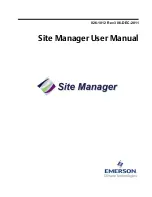
32
Advanced System Diagnostics and Troubleshooting Guide
Packet Errors and Packet Error Detection
The slow-path and fast-path categories each have a separate configured threshold and associated action
that occurs at the end of the 20-second window:
•
For the slow-path category, the three types of slow-path subcategory reports are tallied and
compared to the configured slow-path subcategory threshold.
•
For the fast-path category, the two types of fast-path subcategory reports are tallied and compared to
the configured fast-path subcategory threshold.
If either of these thresholds is exceeded, that window is marked as a “bad” window. For each bad
window, the interpreting and reporting subsystem inserts a Sys-health-check error message into the
system log, indicating the primary reason why the window was marked bad.
The interpreting and reporting subsystem also maintains a running history of the windows it processes.
After it completes the window processing cycle, the interpreting and reporting subsystem examines the
window history list and counts the number of bad windows in the list. The bad window count is
compared to a configured window error parameter value. If the bad window count equals or exceeds
the window error parameter value, the interpreting and reporting subsystem alerts the system health
check system that there is a potential service-affecting condition. The system health check system will
then take the action specified in the
configure sys-health-check
command (for more information,
see
“Health Check Functionality” on page 71
):
•
Insert an error message into the system log
•
Send an SNMP trap to the configured trap receivers
•
Take an offending module offline
•
Take the entire switch offline
•
Attempt to perform an automated recovery through the use of the packet memory scanning and
mapping capability
NOTE
The default system health check action is to insert an error message into the system log, but in many
environments, it is advisable to configure the system health check to send a trap to configured trap
receivers to provide faster notification of potentially service affecting conditions.
The interpreting and reporting subsystem is enabled by default, and the default values for the slow-
and fast-path thresholds and bad window counters depend on the switch platform type (see
Table 4
).
Table 4: Default Threshold and Counter Values
Minimum Summit “
i”
Alpine
BlackDiamond
Maximum
3802
3804
3808
6808/6804
6816
Slow-path threshold
1
2
2
2
2
2
2
254
Fast-path threshold
1
1
1
2
3
6
12
254
Window history
1
3
3
3
3
3
3
32
Window errors
1
3
3
3
3
3
3
32
Summary of Contents for ExtremeWare Version 7.8
Page 8: ...8 Advanced System Diagnostics and Troubleshooting Guide Contents...
Page 14: ...14 Advanced System Diagnostics and Troubleshooting Guide Introduction...
Page 24: ...24 Advanced System Diagnostics and Troubleshooting Guide i Series Switch Hardware Architecture...
Page 48: ...48 Advanced System Diagnostics and Troubleshooting Guide Software Exception Handling...
Page 102: ...102 Advanced System Diagnostics and Troubleshooting Guide Additional Diagnostics Tools...
Page 110: ...110 Advanced System Diagnostics and Troubleshooting Guide Troubleshooting Guidelines...
Page 120: ...120 Advanced System Diagnostics and Troubleshooting Guide Index...
















































